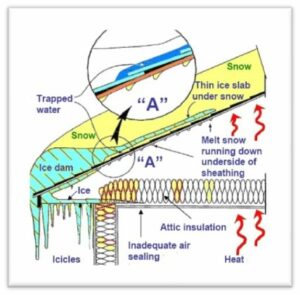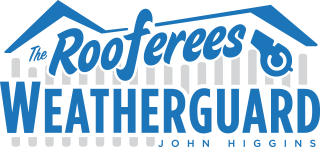The Omaha metro area has seen a fair share of snow in recent days. Unfortunately the first significant snowfall was a heavy, wet snow, which melted on impact due to warm temps, and later froze, forming a layer of ice forming initially on surfaces.
When snow falls on top of a layer of ice, there is the potential for ice jams to occur. If you notice icicles hanging from your roof, or signs of water leaking into your home, you may have a problem with ice jams.
According to the Rooferees, ice jams occur when precipitation, in this case snow, is in a pattern of melting and refreezing. Snow melts as the temperature climbs, and refreezes as the temperature dips, forcing water and ice under shingles and the roof underlayment. This can eventually lead to water leaking in your house. This is a strong possibility with this storm because the forecasted highs over the next several days are at or above freezing.

Inadequate insulation in your home allows heat to escape into your attic. As the heat in the attic reaches the roof, the roof deck warms and melts the snow on top of your roof. The pattern of melting and refreezing causes a layer of ice to form under the snow on the surface of your roof. Your roof will become damaged, and water can leak into your home.
It is not safe to climb on your roof when it is covered in ice and snow. You may cause more damage to your roof by trying to remove ice or snow, so the Weatherguard team recommends you leave it alone for right now. Icicles on the roof are not always a sign that an ice jam has formed, so it may not be a problem. But if you notice water leaking in your home, don’t try to fix it yourself, call a professional!
If you own a roof rake, and can safely reach your roof from the ground, it may help to remove what you can reach. Otherwise, let Mother Nature do her job and wait for the ice and snow to melt.

